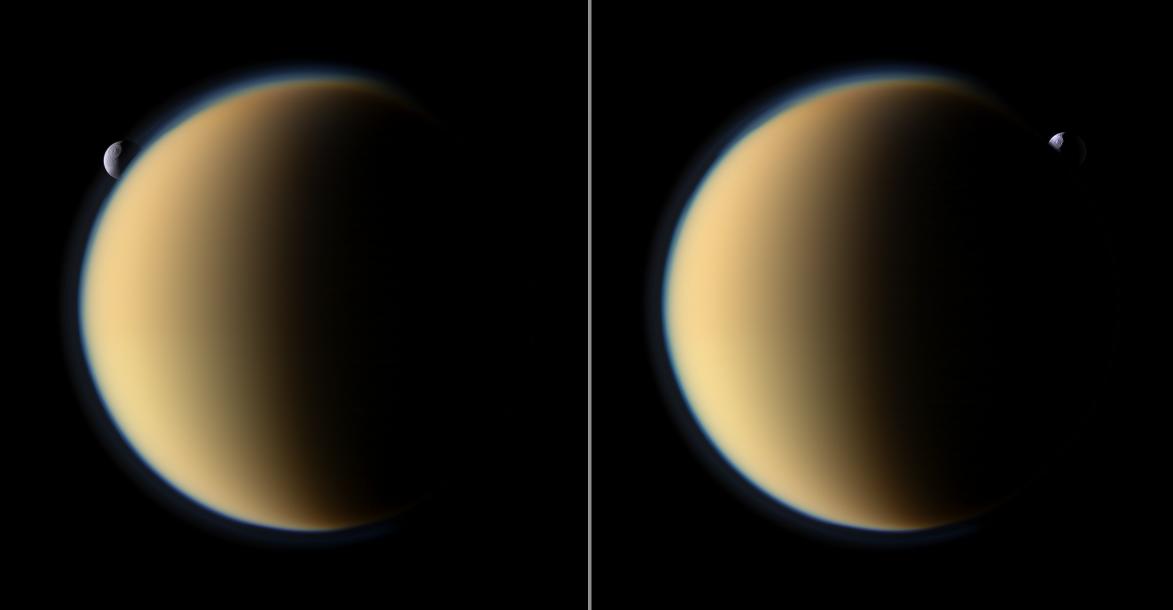Tethys Slips Behind Titan

| PIA Number | PIA12528 |
|---|---|
| Language |
|
Saturn's moon Tethys with its prominent Odysseus Crater silently slips behind Saturn's largest moon Titan and then emerges on the other side.
Tethys is not actually enshrouded in Titan's atmosphere. Tethys (1,062 kilometers, or 660 miles across) is more than twice as far from Cassini than Titan (5,150 kilometers, or 3,200 miles across) in this sequence. Tethys is 2.2 million kilometers (1.4 million miles) from Cassini. Titan is about 1 million kilometers (621,000 miles) away. See Titan's Halo to learn more about Titan's atmosphere.
These two color views were captured about 18 minutes apart, with the view on the right taking place first. These images are part of a mutual event sequence in which one moon passes close to or in front of another as seen from the spacecraft. Such observations help scientists refine their understanding of the orbits of Saturn's moons.
Images taken using red, green and blue spectral filters were combined to create this natural color view. The images were obtained with the Cassini spacecraft narrow-angle camera on Nov. 26, 2009. Image scale is 6 kilometers (4 miles) per pixel on Titan and 13 kilometers (8 miles) per pixel on Tethys.
The Cassini-Huygens mission is a cooperative project of NASA, the European Space Agency and the Italian Space Agency. The Jet Propulsion Laboratory, a division of the California Institute of Technology in Pasadena, manages the mission for NASA's Science Mission Directorate, Washington, D.C. The Cassini orbiter and its two onboard cameras were designed, developed and assembled at JPL. The imaging operations center is based at the Space Science Institute in Boulder, Colo.
For more information about the Cassini-Huygens mission visit http://saturn.jpl.nasa.gov . The Cassini imaging team homepage is at http://ciclops.org .
Credit: NASA/JPL/Space Science Institute
